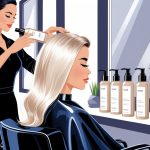Vitamin C Serums Finally Getting Results Doctors Stand Behind
Ingredients That Actually Matter (And a Few That Don’t)
Every “miracle” serum has the same buzzwords, but nobody really wants to admit you need the right combo for actual results. I’ve seen so many wild claims, but when you ask real dermatologists, they talk about antioxidants and hydration—nothing fancy, just stuff that works and doesn’t fry your face.
Ferulic Acid: Not Just a Marketing Trick
Everyone loves to say “ferulic acid” like it’s magic. But the real reason it matters? It stops vitamin C from breaking down so fast. Dr. Ranella Hirsch won’t shut up about it. Without ferulic, your serum loses half its power before you even finish your coffee. Also, this combo stings less than vitamin C alone, which I found out after months of using a cheap knockoff. The pH matters, too—science, not just “glow.” SkinCeuticals loads up on ferulic for a reason. If you’re not getting 10-20% L-ascorbic acid plus ferulic, you’re basically tossing your money.
Vitamin E: The Sidekick Nobody Talks About
Vitamin E is fat-soluble, so it sneaks into your cell membranes where water-based stuff can’t. I kept buying serums without E, thinking “more C, more results,” but nope. Clinical reviews show C + E seriously cuts UV damage. Not just a claim—there are actual studies (Antioxidants, Vol. 11, No. 3, 2022, if you care). Vitamin E (usually alpha-tocopherol at 1%) also keeps vitamin C from breaking down so fast and makes the serum less sticky. If you’re fighting acne marks or melasma, dermatologists always recommend this combo. Ignore “plant-based antioxidants” unless you’ve seen real research.
Hydrators: Hyaluronic Acid, Squalane, Glycerin—Do They Matter?
Some people say you don’t need hydrators, just a moisturizer after. But anyone with sensitive skin (me, wintertime) knows a base of hyaluronic acid (medium weight, like 0.1-1%) helps the serum sink in without making your face feel like cardboard. Squalane and glycerin get no love in ads but matter in real life. Squalane keeps water in, doesn’t clog pores, and shows up in brands like CeraVe and The Ordinary for a reason. Glycerin grabs water from the air so your skin doesn’t dry out. Dr. Corey Hartman swears by layering it after serum. Sometimes, hyaluronic acid even tones down that vitamin C sting. If the first five ingredients don’t include at least one of these, you’re probably wasting your money.
Picking a Vitamin C Serum: Why Is This So Hard?
It’s 7 a.m., I’m sweating under the bathroom light, and every bottle says “all skin types” like that means anything. Redness, tightness, oil slicks—none of that is solved by a generic label. Sensitive or mature skin? Pay attention to pH and the actual L-ascorbic acid concentration. I started counting how many “hydrating” serums flake under sunscreen, but then got distracted by the fake floral scent in one. Texture, finish, how it layers—nobody talks about that, but it’s the real difference between “glow” and “why did I waste my money?”
Options for Sensitive and Reactive Skin
So, here’s the thing—my skin’s a drama queen. Sneeze in its direction, it’s red for an hour. I keep falling for these “gentle” vitamin C formulas, but what does that even mean? They’ll swap in magnesium ascorbyl phosphate or sodium ascorbyl phosphate because, apparently, that’s less irritating than straight-up L-ascorbic acid. Dr. Corey L. Hartman, board-certified dermatologist and, honestly, probably tired of my emails, says so. Someone DMed me after they tried a serum with denatured alcohol—“my face melted for a week.” Been there, except mine just peeled and looked angrier. You want fragrance-free, barely-there ingredient lists. The Ordinary’s Vitamin C Suspension 23% in silicone? Bonkers strong. Paula’s Choice C15 Super Booster? No fake scents, 15% L-ascorbic, a little less scary. Kira swears it stopped her itching, but it left me looking like I’d dunked my face in oil. Patch test twice. Jaw, cheekbone. I learned the hard way, because rashes don’t follow rules. Cold storage? I mean, maybe it helps, or maybe I just want to believe it does. Either way, I’m not risking those little broken capillaries every winter.
Hydrating Formulas for Dry or Mature Skin
Dry skin is just rude. I’m talking flakes before breakfast, fine lines waving at me through tinted moisturizer. So I end up squinting at ingredient lists, hunting for “hyaluronic acid” and squalane—glycerin, too, because it’s clingy like that. Dr. Shari Marchbein once told me, “Go for serums that feel like watered-down gel, not sticky glue.” (Allure, 2024, if you care.) Tried CeraVe Vitamin C Serum with hyaluronic acid—absorbs fast, doesn’t feel tight, but some folks gripe it flakes under makeup. I get petty if I don’t see vitamin E or ferulic acid in there—those two are like the Avengers of antioxidants. Once, I skipped moisturizer with La Roche-Posay Pure Vitamin C10. Big mistake. By lunch, my face felt like parchment, but after three weeks, my jawline looked brighter. Airless pumps? I’m obsessed now. Oxidation ruins everything, and I’ve lost more shirts to leaky droppers than I want to admit.
Lightweight Choices for Oily or Acne-Prone Skin
Oily skin, my nemesis. By noon, I’m basically a disco ball, and I swear most “oil-free” serums are lying. Someone at work raved about SkinCeuticals Silymarin CF—yeah, it’s pricey, clear, and the 15% vitamin C with salicylic acid did help some breakouts. Not all. Does anything work every week? I stick to thin layers—pea-sized, always after a BHA toner. Liquids, not creams, or my chin erupts. I check every label because niacinamide somehow ruins my forehead, but other people love it. The bottle says “non-comedogenic,” but I still end up shiny under double sunscreen. At least my dark spots faded faster than last summer. Forget and slap on sunscreen too soon? Sticky, shiny mess. Maybe I’m just impatient.



